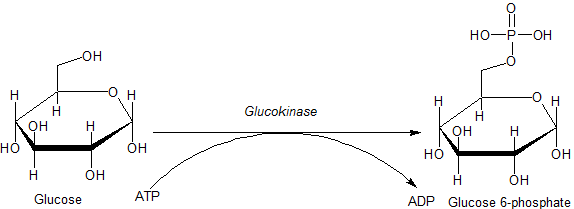Daily Newsletter February 20, 2012
Administrative NOTE: This week, we will be looking at how cells can breakdown glucose to acquire energy and carbon by using metabolic pathways. As we say last week, cells will put chemical reactions in sequence in an attempt to direct changes in molecular structure to either build or break biomolecules.
You may have noticed that there are no learning objectives given this week. As part of this week's exercise, I want you to build your own learning objectives. In reading the newsletter, and chapter 9 (pathways that harvest chemical energy), you will come across information on metabolic pathways and respiratory chains. Try to come up with learning objectives by using specific phrases and terms that describe knowledge you will be expected to carry and use. Before the next milestone, I'll give a set of learning objectives as I see them. As a supplemental blog with 4 points, you can post your learning objectives before the end of this week. Later, when mine are released, you can comment on your learning objectives by reflecting on how they match mine for another 4 points.
Daily Topic: Glycolysis steps 1-5
Today we start looking at the metabolic pathway of glycolysis. In the textbook, this information is catagorized as how cells harvest energy, but cells harvest carbon as well with these reactions. A question that every cell asks its self moment by moment is: What do I need now, carbon or energy? Intermediates from our catabolic pathways provide precursors for other biochemicals, but they also provide energy in the form of reducing potential.
With digital technology, you can go on line and pull down images of the glycolytic pathway. Nearly every biology textbook has these images. Your goal this weak is NOT to memorize these metabolic reactions. Your goal is to understand what is happening. I would like you to also learn something of the enzymes being used. As an example, I am going to discuss the first reaction:
Glycolysis describe the splitting of glucose into two three carbon Pyrvate molecules. This pathway consists of 10 reactions that carry out this splitting by inducing specific changes into the molecule. The first five steps are classified as preparatory, or energy consumptive. In these steps, we are preparing the molecule of glucose for the first split.
Glucose is chemical stable. Glucose does not spontaneously explode or degrade. Chemical stability also implies that it does not react easily. So, we need to make it more reactive. We also need to get it into the correct configuration for splitting. That is the goal of the first four steps.
In step 1, we use the enzyme hexokinase. The root word here is kinase. A kinase is an enzyme that adds a phosphate group to a molecule. In this case, hexokinase is an enzyme that adds a phosphate group to a six carbon sugar, namely glucose. You will notice in the above picture that the enzyme is referred to as glucokinase. Glucokinase is a specific hexokinase (Hexokinase IV), and is found in specific mammalian cells found in the intestines, liver, pancreas, and brain.
Hexokinase is generally attached to the glucose carrier found in the cell membrane. When glucose is brought into the cell, hexokinase adds a phosphate group to the sixth carbon. Glucose 6-P refers to a glucose molecule with a phosphate on the sixth carbon. In order to carry out this phosphorylation, we use ATP. ATP transfers a phosphate to the sixth carbon of glucose. (enzymatically, how would this happen? Would you need both ATP and Glucose in the active site?)
Why do we need to phosphorylate glucose? This is an important question, and something you should ask for every metabolic reaction. Why do we need to do it? What is the end product? You should also ask yourself questions about the enzyme.
- Why do you phosphorylate glucose?
- Glucose is stable, so the addition of phosphate with its -2 charge causes an electrical instability in the molecule.
- Glucose 6P is more reactive than Glucose.
- Glucose 6P can not leave the cell through the Glucose Carrier (they are different molecules now).
- Glucose 6P does not interfere with the concentration gradient of Glucose (they are different molecules, each with a concentration gradient).
- Glucose then remains high on the outside of the cell, but almost zero inside of the cell (incredibly strong concentration gradient).
- What about the enzyme?
- Is it regulated?
- Unidentified allosteric regulation.
- What is the structure?
- 465 amino acids
- What does the active site look like?
- Active site fits Glucose and ATP.
- What about the activity?
Daily Challenge: Glycolysis steps 2-5
Go through steps 2-5 of glycolysis. Quote some source (book or textbook) that talks about the reaction and what is happening. Make sure you provide the reference. If you find a picture, add it. After the quote, I want you to reflect on what is meant in the quote. Most of you have not had organic chemistry yet, so I'm not asking you to delve into the chemistry behind the reaction (it is great though if you do). What I want you to do is build a discussion of what happens in the reaction (in your own words). Reference the quote all you like as you build your discussion. What is important is that you build an understanding of what is happening. Also reference the enzyme being used. The enzyme name tells you the enzyme function. So what is the function of the enzyme? What reaction does it catalyze? Is there anything interesting about the enzyme?

No comments:
Post a Comment